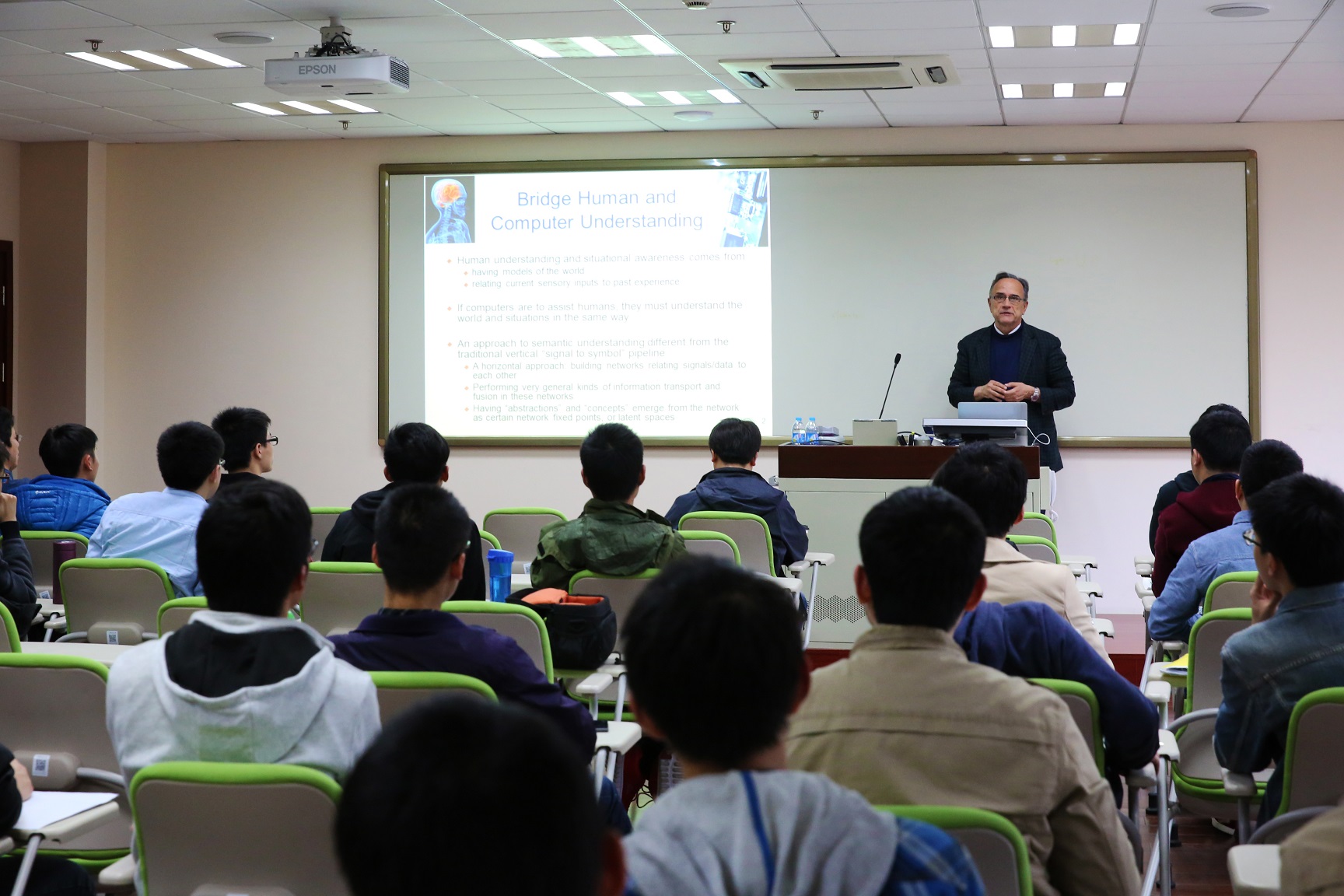On April 20, 2015, Leonidas Guibas, professor of computer science at Stanford University, gave a talk named “Networks of Shapes and Images” to ShanghaiTech faculty and students.
Prof. Yi Ma, executive dean of School of Information Science and Technology (SIST), introduced the speaker’s academic career. As an ACM Fellow, an IEEE Fellow and winner of the ACM Allen Newell Award, Prof. Guibas is a well-known master in computer graphics. Some of his well-known accomplishments include the analysis of double hashing, red-black trees, the quad-edge data structure, Voronoi-Delaunay algorithms, the Earth Mover’s distance, Kinetic Data Structures (KDS), Metropolis light transport, heat-kernel signatures and functional maps.
Prof. Guibas pointed out that, across science, engineering, medicine and business we faced a deluge of data coming from sensors, simulations or activities of individuals on the internet, and the data often contain geometric and/or visual characters. Furthermore, the geometric data sets we collected were frequently highly correlated, reflecting information about the same or similar entities, or echoing semantically important repetitions/symmetries or hierarchical structures common to both man-made and natural objects. He described general mathematical and computational tools for the construction, analysis and exploitation of such relational networks. By creating societies of data sets and their associations in a globally consistent way, we enabled a certain joint understanding of the data that provided the powers of abstraction, analogy, compression, error correction and summarization. Faculty and students were greatly attracted to the intriguing images Prof. Guibas showed during the talk, and had extensive discussion with him afterwards.
Bio:
Leonidas Guibas obtained his Ph.D. from Stanford in 1976, under the supervision of Donald Knuth. His subsequent employers include Xerox PARC, MIT, and DEC/SRC. He has been at Stanford since 1984 as Professor of Computer Science. He has produced several Ph.D. students who are well-known in computational geometry, such as John Hershberger, Jack Snoeyink and Jorge Stolfi, or in computer graphics, such as David Salesin, Eric Veach and NiloyMitra.
